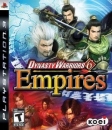SANTIAGO, Chile (Reuters) - A massive magnitude-8.8 earthquake struck south-central Chile early on Saturday, killing at least six people, triggering a tsunami and rattling buildings in the capital Santiago. World | Natural Disasters President Michelle Bachelet said six people were killed and that more deaths were possible. Telephone and power lines were down, making a quick assessment of the damage difficult in the early morning darkness. The U.S. Geological Survey said the earthquake struck 56 miles northeast of the city of Concepcion at a depth of 22 miles at 3:34 a.m. (1:43 a.m. ET). Local television stations said there was damage to buildings in the historic center of Santiago, which lies about 200 miles north of the epicenter. People streamed onto the streets of the capital, hugging each other and crying, and there were blackouts in parts of the city. An earthquake of magnitude 8 or over can cause "tremendous damage," the USGS says. The quake that devastated Haiti's capital Port-au-Prince on January 12 was rated at magnitude 7.0. The Pacific Tsunami Warning Center said the Chile quake generated a tsunami that may have been destructive along the coast near the epicenter "and could also be a threat to more distant coasts." It issued a tsunami warning for Chile and Peru, and a tsunami watch for Ecuador, Colombia, Panama, Costa Rica and Antarctica. According to a 2002 census, Concepcion is one of the largest cities in Chile with a population of around 670,000. Chile's main copper producing region and some of the world's largest copper mines are in the far north of the country near its border with Peru, but there are also copper deposits near Santiago. Chile produces about 34 percent of world supply of copper, which is used in electronics, cars and refrigerators. In 1960, Chile was hit by the world's biggest earthquake since records dating back to 1900. The 9.5 magnitude quake devastated the south-central city of Valdivia, killing 1,655 people and sending a tsunami which battered Easter Island 2,300 miles off Chile's Pacific seaboard and continued as far as Hawaii, Japan and the Philippines.
Existing User Log In
New User Registration
Register for a free account to gain full access to the VGChartz Network and join our thriving community.





































































